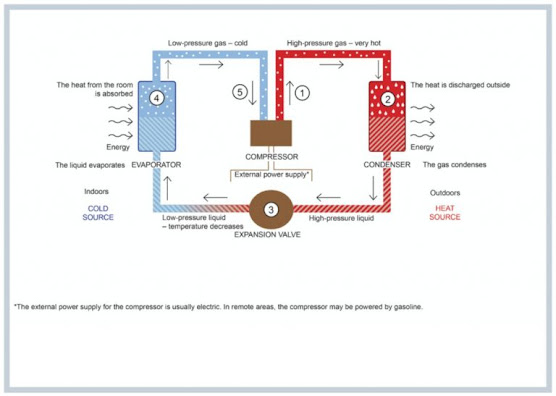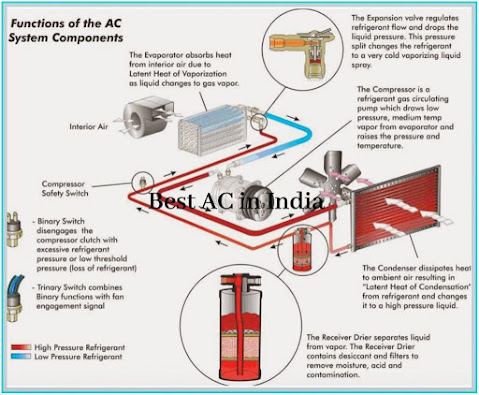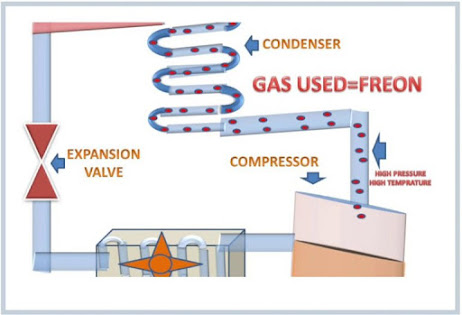No matter whether you belong to the technical field or not, but you must have an excellent and right idea about how each stuff works. It can be any appliance or gadget present in your house or office. In the case of an AC, it is not only beneficial for you to make the right decision to buy the right model but also to get it repaired without spending more.
So, overall a little knowledge can help you to be smart, and they are not rocket science! You only need to understand a simple principle. It is the idea behind working on a gadget or an appliance that is available with you or something that you are looking to buy. That’s it!
Mostly they are comfortable enough that a small child can easily remember! So in this context, let us do have a look at the science behind how an AC works? But, before understanding the working principle of an AC, it is best to clear our basic concept about “what are they?”
As the name identifies, it is an appliance that improves the condition of air in a particular area, either it is a room, hall, or car! Most of the people use an AC to cool down the temperature of a space. Yet many units are also available that do the job of increasing the temperature of the air as required!
What Is the Process Behind the Working of an Air Conditioner?
In the case of the cooling process, the
air conditioner sucks hot air from the surrounding environment where it has been installed. Next, it throws it outside and releases a cool breeze back to the same area!
The complete procedure looks simple, but in reality, it is not since the system uses various components that work together to get the job done. So, the essential parts of an AC unit are Refrigerant, Condenser, Evaporator, Expansion Valve, and a Compressor. The refrigerant travels in a set of smaller coils that is the primary element of an air conditioner to cools down the air under processing.
It is best to avoid any chances of confusion by having half knowledge. Before analyzing the working procedure of an AC, we must also have an idea about the different types that the system is available in the market. So there might be some differences according to their build nature and purpose!
Thus, generally, we are using two kinds of ACs, window, and split. In some commercial places, you can found some people prefer some central or mini-split systems. But they are classified under the split AC systems.
A good thing to know here is both the types of air conditioners work on a similar principle and have the same components. The difference lies only in their placement. In the window AC, everything is combined into one single unit, while in split, they are separated into unit’s namely indoor and outdoor ones! Window AC vs Split AC is usual a big doubt for the 1st time Air Conditioner buyers.
What are the Different Components of an AC?
Now coming back to our working principle, all types of ACs have the following parts with their roles. Let us consider the case of the split that is commonly used in these days everywhere.
Refrigerant – Almost what we know inside a fridge, a refrigerant is also be using in an AC. It plays a significant part in cooling the air. There are many types of refrigerant gases used in air conditioners. It includes hydrocarbons (R-600A and R-290); and HCFCs or hydro chlorofluorocarbons (R22). Also, HFCs or hydrofluorocarbons (R-410A).
Evaporator – The first task of an air conditioner is to collect the heat of the area where it is installed. So the evaporator is the part that is responsible for this and present in the indoor unit. A refrigerant is used inside the heat exchanger coil to collect the surrounding heat. After absorbing the heat, the liquid evaporates to form a refrigerant gas. Now, this gas travels to the next component.
Compressor – It is present inside the outdoor unit. The main job is to collect the refrigerant gas coming from an evaporator and further compress it.
Condenser – The main task of this component is to take the vaporized refrigerant and condense it. The next process is to convert it into liquid form for re-use purposes. It can be done by dissipating the heat to the outside environment. So, no doubt, it has to be located on the outdoor unit of an AC system.
Expansion Valve – Now, the liquid refrigerant can be used again, but wait, Did we uncompressed the gas? Yes, it was done while the refrigerant was passed among the coils (chilled) of the evaporator and coils (hot) of the condenser. Thus, a throttling device or an expansion valve is usually present in between them. It is responsible for treating the refrigerant moving towards the evaporator.
How does it Work?
After turning on an
AC and setting a specific temperature, the next task is of the sensor or a thermostat present inside an AC. It measures and detects the amount of difference lies in between your set and room temperature.
Now the indoor unit sucks the warm air from the lower portion and flows it over the coolant pipes of the evaporator. The set of pipes include refrigerant that turns to hot gas after absorbing heat from the air that falls on it. So, not only temperature but the system also does a great job of removing all the humidity of the incoming air and helps to de-humidify your room.
Next, the hot refrigerant gas will be passed to the compressor at the outdoor unit. It will further compress down the air and hence increases its temperature even more. The high-pressure gas reaches to condenser and cools down to form a liquid state again. During this process, the heat is passed to the outer environment through blower from the outdoor unit using metal fins.



This information is very helpful. Thanks for homebest.in
ReplyDelete